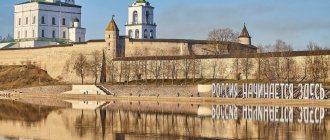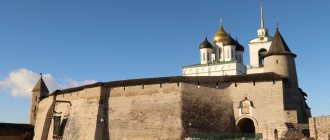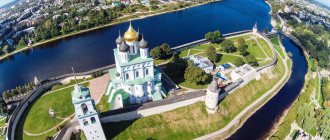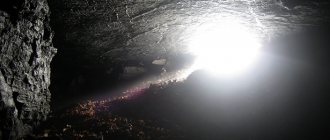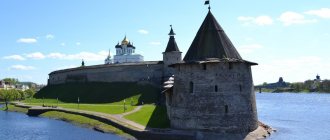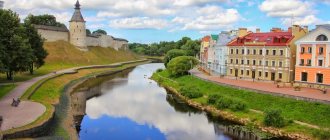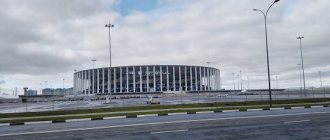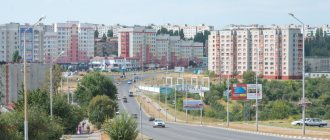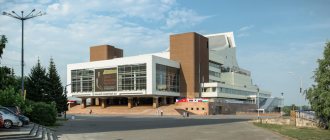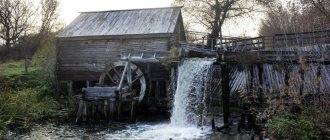Pskov is a large and majestic city in the north-west of the country, on the banks of the Velikaya and Pskova rivers. One of the best places to visit the Middle Ages, immerse yourself in the history of Rus', stroll along the streets where princes and princesses once walked, whose names are inscribed not only in Russian, but also in world history. For many centuries, Pskov was the westernmost populated area of the state, the city from which Rus' began. And today it is an amazing corner where you can feel the breath of centuries-old history, a place of attraction for lovers of antiquity, nature and unusual sights.
History of Pskov
The first chronicle mentions of Pskov date back to 903 AD, although there is information that the ancient Slavs settled on the site of the current city back in the 9th century. The founder of the city is called Princess Olga. There is also information that the city was originally named Pleskov, and later renamed Pskov after one of the rivers on the banks of which it is located.
At the dawn of its existence, the city was part of Kievan Rus, then it belonged to the Novgorod lands, and then completely became the capital city of the Pskov Republic. Already at the beginning of the 16th century, Pskov became part of the Grand Duchy of Moscow. Moreover, until the 18th century it was one of the largest cities in Russia and Europe, the most important trade and defensive center. Pskov retained its position until St. Petersburg appeared on the banks of the Neva and the expansion of Russian borders to the west.
Over its long history, Pskov more than once had to hold back enemy attacks, many times the city found itself in the epicenter of hostilities, and even had to be occupied twice. It suffered greatly during the Great Patriotic War, and after its end it was included in the number of cities that should have been restored first. In 2009, Pskov was awarded the title of City of Military Glory.
All the events of more than a thousand years of history of Pskov have left their mark on its culture and are reflected in architectural structures and monuments, which today delight and never cease to amaze residents and guests of the city with their grandeur.
Elga under the drizzle
Pskovites are very creative. And they did everything in their own way, not like others. And they built in their own way, and governed the city, and painted icons in their own traditions. They even talked in their own way. In Russian, of course, but with peculiarities. For example, we now say: “I’ll go pick some mushrooms.” And in Pskov they would say: “I’ll go to the mushrooms.” It's like visiting. The Pskovites also had some unusual words: not soup, but pottage; not spruce, but spruce; not a light rain, but a drizzle.
And also - the freedom-loving people of Pskov, did not bow their heads to anyone. And even if in front of them was a noble boyar, even a rich merchant, they would not take off their hats. Because of this custom, residents of other cities believed that the Pskovites were too self-important. But they objected: “We take off our hats only to the saints.” This meant - in the temple, in front of the holy icons.
Sights of Pskov
Modern Pskov offers attractions for every taste. There are also ancient churches, whose simple facades sometimes hide real treasures, and buildings that protected not only the city itself, but also all Russian lands from numerous enemies. The city will also delight lovers of museums and theaters of small architectural forms. There is also amazing nature and many natural attractions here. Therefore, even a cursory examination of all the beauties and historical monuments of Pskov will take more than one day.
Church buildings
Among the architectural sights of Pskov, church buildings occupy a special place. At the 43rd session of the UNESCO World Heritage Committee, 10 churches of the Pskov School were included in the World Heritage List.
Cathedral of John the Baptist of the Ivanovo Monastery
The structure of the main church of the St. John's Convent dates back to the 12th century. The cathedral became one of the first stone churches in the city and the final resting place of many Pskov princesses.
Where is it: st. Maxim Gorky, 1.
Cathedral of the Transfiguration of the Lord of the Spaso-Mirozh Monastery
The very first stone church of the city and the only building of the Byzantine type. The cathedral is the same age as Christianity in Rus'; it was erected in those years when the new religion was just emerging.
Inside the cathedral, frescoes from the pre-Mongol period, created by craftsmen from Greece, have been preserved. Moreover, this priceless treasure was discovered completely by accident - during the renovation work that was carried out in the cathedral in 1858.
Currently, to preserve medieval paintings, a special microclimate is maintained inside the temple, so it is not always possible to get into the temple (for example, in wet weather, the door to it is tightly closed).
Where is it: Mirozhskaya embankment, 2.
Cathedral of the Nativity of the Virgin Mary
In this temple you can also see unique medieval frescoes. But their authorship belongs to Pskov masters - the creators of their own school of temple painting. Prince Dovmont-Timofey is called the possible founder of the cathedral.
It is interesting that the Snetogorsky Monastery, on whose territory the cathedral is located, was founded as an outpost of the city at the end of the 13th century. Only strong and strong monks were selected here, who, if necessary, could repel the enemy.
Where is it located: Snyatnaya Gora, 1.
Church of St. Michael the Archangel with bell tower
According to the date indicated on the slab inside the church, it was built in 1339. At the time of construction, it was practically part of the fortress city wall. Later, already in the 17th century, a separate stone church was erected on this site. At the beginning of the 20th century, the temple briefly became the main cathedral of the city.
Location: Sovetskaya, 18 k1.
Church of the Intercession of the Nativity of the Virgin from Prolom
A double temple with which heroic events in the history of the city are associated. In 1581-82 Here the hundred thousandth army of the King of Poland Stefan Batory was stopped. As the chronicle tells, during the siege of Pskov, Polish-Lithuanian troops managed to make a hole in the city wall next to the monastery. However, after the icons of the Dormition and Tenderness of the Pskov-Pechersk, as well as the relics of the holy noble prince Vsevolod-Gabriel, were brought to the site of the breach, the townspeople were so inspired that they repulsed the enemy, which, in essence, put an end to the war.
Where is it: st. Sverdlova, 1.
Church of Cosmas and Damian from Primostje
The exact date of construction of the first church of Cosmas and Damian is hidden in the centuries. In written sources, the first mention of it is associated with a fire in 1458, when the wooden structure completely burned down. After this, the church was restored in stone. Subsequently, the stone structure burned repeatedly. One of the worst fires occurred in 1507, when gunpowder, which was stored in the cellars of the church, exploded.
The last destruction of the church building dates back to the Great Patriotic War, after which the temple was once again restored. Since 2008, its gates have been reopened to parishioners.
Where is it: st. Leona Pozemsky, 7.
Church of St. George from Vzvoz
Built in 1494 at the crossing of the Velikaya River, not far from the place where the medieval customs house was located. In 1860, a walled crypt with an oak coffin was discovered in the temple. Presumably in the coffin were the remains of St. John, the recluse of Pskov-Pechersk, who lived for 22 years in the city wall, eating only fish.
Around the church, according to legend, lie the ashes of hundreds of defenders of the city. In the Middle Ages, this place was the most vulnerable and many enemies heading to Rus' tried to attack the city here.
Where is it: st. Georgievskaya, 1.
Church of the Epiphany with belfry
Also known as the Church of the Epiphany in Brodech. The only temple that has preserved exclusively Pskov classical architecture. At different times, during renovation work, unique frescoes and unknown burials were discovered here. The most mysterious burial, consisting of a huge number of skulls, was discovered in the church basement.
Where is it: st. Herzen, 7.
Church of St. Nicholas of Usokha
Built on the site of a dry swamp. In ancient times, on the site where the temple is located, the main street of Pskov passed, where rich merchants lived. It was they who built the church for themselves.
Where is it: st. Sovetskaya, 19.
Church of St. Basil on Gorka
The construction of the first temple dates back to 1337. The founder is considered to be a merchant of German origin, Christopher Karel Dol (he is the founder of the famous Pskov families of the Yakhontovs, Svechins, and Levshins.
Where is it: st. Oktyabrsky Prospekt, 5.
Defensive buildings
The defenses of Pskov have always aroused admiration among neighbors and discontent among those who tried to capture the city. Many cities of Ancient Rus' resorted to the services of Pskov architects. Currently, the Krom (Kremlin) and several towers have been preserved from the city defensive rings.
Chrome ( to reml)
– the heart of the ancient city. It is a snow-white fortress of the 11th – 12th centuries, which rises on a cliff at the confluence of the Pskova and the Velikaya. The central place of the fortress is Vechevaya Square. In addition to natural fences in the form of rivers, Krom is protected from the south by the deep moat of Grebley and a defensive rampart, which is called Persi (Pershi). In addition to their main function, the Persians also performed a number of additional tasks. In particular, a bell tower for cathedral and veche bells was installed on them. The Percys were rebuilt many times and constantly strengthened.
Interesting fact: no one has ever lived on Pskov Krom. Here the townspeople kept their most valuable property. Public supplies in case of a siege and a “green treasury” with reserves of gunpowder, cannonballs, and military equipment were also located here. All this was guarded by guard dogs.
Nowadays, while walking along Krom, you can see a zahab (from the Old Russian “okhaben” - “sleeve”) - a place where the attackers found themselves sandwiched between two walls under the crossfire of the fortress’s defenders; memorial cross on the site of the Annunciation Cathedral and Vecheva Square.
And on one of the walls of the fortress wall there is an interesting composition dedicated to the victory of Prince Alexander Nevsky on Lake Peipsi in 1242: a shield in the form of a military banner with the coat of arms and plan of Pskov. Just below are plates with the coats of arms of the cities whose warriors took part in that significant event. The author of the composition is a local architect, restorer, artist and blacksmith Vsevolod Petrovich Smirnov.
Towers of the Pskov Fortress
In its heyday, historians and archaeologists estimate that 43 or 44 towers stood around Pskov. 16 have survived to this day. The most interesting of them:
The Pokrovskaya Tower is the most powerful tower of city fortifications and it is one of the largest in Europe. Its outer circumference is 90 m and its height is 50 meters. The tower has 5 tiers. The time of construction is the end of the 15th - beginning of the 16th centuries. It is located in the southwestern corner of the Krom fortifications, on the banks of the Velikaya River.
Naugolnaya or Varlaam Tower , also known as Kutniy bonfire and Kutekroma. Built around 1400, restored in 1961. Located in the northwestern part of the Pskov Kremlin. In the 18th-19th centuries there was a gazebo here, where the great Russian poet A.S. Pushkin used to love.
Vlasyevskaya Tower –
A 32-meter building with a high tent and an observation attic at the descent to the Velikaya River. Originally built in the 15th century, restored according to ancient documents in 1966. Previously, only through the gate located in this tower was it possible to enter the central part of Pskov to the market. At the same time, the local customs office was located in the tower.
Mikhailovskaya Tower - located on the eastern line of the fifth defensive ring of the city fortress. It is named after the St. Michael's Monastery that was previously located here. It is noticeably smaller in size than other towers in Pskov, as it is located in an area where, due to swampiness, the risk of enemy attack was minimal.
The Gremyachaya Tower (at first it was called Kosmodemyanskaya - after the name of the church of Kosma and Damian that stood near it). The only tower about the construction of which precise information has been preserved: “In the summer of 7033 (1525) on Gremyacha Mountain, above Pskov...” From the Gremyacha Tower across the river there was a fortress wall with Upper gratings that blocked the waterway to the city by water. The Gremyachaya Tower is one of the most beautiful towers of medieval Pskov, with which many local legends are associated.
Tower of Prince Dovmont or Smerdya Tower . Its second name comes from the word smerd, serf, man of the mob, peasant. The original structure was larger and more impressive than what can be seen today. The current tower was built on the site of the ancient one in 1866 according to the design of the architect K. Ton.
Ancient civil buildings of Pskov
Pskov is famous not only for its churches and defensive structures. In a modern city you can see many civil buildings dating back to different eras.
Dovmontov city
An ancient architectural complex built in the 12th – 13th centuries, and named after the Pskov prince Dovmont (baptized Timothy). According to the chronicle, Dovmont fortified the city with a wall, which bore his name until the 16th century. In the area surrounded by a wall, you can see the ruins of ancient temples, which are currently conserved.
The central place here is occupied by the well-preserved Order Chambers. They housed “tables” or city departments, including judicial, monetary, local, embassy and discharge. Later, the building housed armories, shopping arcades, and even cultural and health care institutions.
Despite the fact that the building was preserved quite well externally, the original interior was completely lost and partially restored in modern times using documents and drawings from the past. In 1994, a museum was opened in the building of the Chambers of Orders.
Location: Pskovsky Krom.
Pogankin chambers
One of the most famous monuments in Pskov. The chambers were built in the 17th century by order of the head of the Pskov monetary court, the tavern head who headed the city customs, merchant Sergei Pogankin. Inside the chambers there were production workshops, warehouses, rooms for receiving guests, living rooms for the owner himself, his family and domestic servants.
After the death of the last representative of the Pogankin family, the owners of the chambers changed several times, until at the beginning of the 20th century they were transferred to the ownership of the Pskov Archaeological Society. After this, a museum was opened in the building of the ancient chambers.
Where are they: st. Nekrasova, 7.
Chambers of the Podznoevs
Built in the 70-80s of the 17th century in the most densely built-up area of Pskov, next to the market. History has not preserved the names of the first owners of the chambers. It is only known that in 1740 the courtyard belonged to Yakov Dakolov, but was empty. Then the chamber changed several owners, until in 1799 it was purchased by the Pskov merchant of the second guild Matvey Sergeevich Podznoev for 750 rubles.
Currently, the restored Chambers are a vivid illustration of the evolution of civil engineering in Pskov, demonstrating the features of techniques characteristic of local architecture of the 16th and 17th centuries. At the same time, anyone can feel like a wealthy merchant of a medieval city - today in Podznoev’s house there is a hotel and an interesting exhibition displaying objects found during archaeological excavations during restoration work.
Where are they: st. Nekrasova, 1.
Menshikov Chambers
In terms of trade volumes and wealth, the Menshikov merchants ranked second after the Pogankins. In 1650, Semyon Menshikov, a former zemstvo elder, built spacious chambers in one of the oldest and most prestigious areas of Pskov - on Romanovskaya Gorka. Subsequently, his son added his house to these chambers, and later, a little further, another large house appeared, built by the descendants of Semyon Menshikov.
At the beginning of the 18th century, the Menshikov buildings were severely damaged by fire, but the foundation of the buildings was still preserved. Currently, they house souvenir shops, a museum and an exhibition of naive art and works of contemporary Pskov painters.
Where is it: st. Sovetskaya, 50.
Solodezhnya or Lapin's house
Remains of a wealthy residential building built in the early 17th century. Neither written sources nor drawings have survived from which one could judge what the building originally looked like. Also, nothing is known about the first owners of the building. The first written information about it dates back to the middle of 1840, when the local merchant Voronin began producing malt here (in fact, this is where the name malt production came from).
Where is it: st. Gogolya, no. 42.
Chambers in Volchi Yamy or Chambers of Syrnikovs
Ruins of a 17th century building. Details of the construction of the building have not been preserved in history. It is only known that at the beginning of the 18th century the house already belonged to one of the richest merchants of Pskov, Yakov Syrnikov. After this, the chambers became the property of the Gremyatsky Kosmodemyansky Monastery and belonged to it until the abolition of the community.
Later, the wards housed a hospital, an almshouse, an officer corps (barracks of the 3rd and 4th battalions of the internal guard) and even a restraining house. Since 1918, the chambers have not been used in any way and were gradually destroyed until they completely turned into ruins. Today, all that remains of the ancient building are the walls of the first floor and fragments of the masonry of the second. Moreover, even from the surviving fragments one can mentally recreate
Where is it: st. Gremyachaya, bank of the Pskova River.
House of Ks e n dza
A small two-story building with a stone wall porch. The house received its name after the priest of the Polish church Witkowski became its owner in 1863, despite the fact that the chamber had changed several owners before. In modern life, museum exhibitions are located in the chambers.
Where is it: Komsomolsky lane, 7.
You can also imagine how rich Pskovites lived and get acquainted with the construction features of the late Middle Ages when examining the house of the merchant Batov (Rizhsky Prospekt, 2); Pechenko House (43 Gogol St.); Rusinov Chambers (Okolny City); Yamsky Chambers (Okolny City); Guryev's chambers (Red Partisan St., 10); Trubinsky Chambers (Zapskovye. Leon Pozemsky St., 22); Chambers of the Postnikovs (Zapskovye. O. Koshevoy St., 2).
Museums and theaters of Pskov
Along with ancient buildings, Pskov is rightfully proud of its museums, the exhibitions of which tell about the peculiarities of the way of life of city residents over many centuries, preserve the memory of ancestors, traditions, etc.
State United Historical-Architectural and Art Museum-Reserve
Founded in 1876 and is one of the oldest in Russia. The museum contains unique ancient icons and books, paintings and archaeological finds, cultural and everyday objects from different eras. Famous collectors and ordinary residents of Pskov took part in the formation of the museum collection.
Today the museum includes 74 monuments of federal significance, 4 of which are recognized as particularly valuable objects of cultural heritage of the peoples of the Russian Federation. In addition, the museum has 8 branches, including the estate museums of composers M. Mussorgsky and N. Rimsky-Korsakov, the first female mathematician S. Kovalevskaya, and writer M. Yamshchikova.
Where is it: st. Nekrasova, 7, in Pogankin Chambers (main building).
Railway Museum
The museum exhibits were collected for a long time and carefully by enthusiasts, the most active of whom was WWII veteran A. Valentik. Currently, the museum has three thematic halls. In the first one you can learn about the features of railway construction in different countries and the history of railway communication in Pskov. Among the exhibits in this hall there are many unique things, including a candle carriage lantern, tools of railway workers and dummies of tickets for the Tsarskoye Selo Railway.
In the second hall, visitors are immersed in the events of 1905 and 1917. and the Soviet period. Documents telling about the abdication of Emperor Nicholas II from the throne deserve special attention. The third hall tells about the role of Pskov railway workers in the events of the Great Patriotic War and about the post-war restoration of communications.
Where is it: st. Vokzalnaya, 38 (opposite the railway station).
Museum of the Novel “Two Captains”
Created in the Pskov Regional Library for children and youth, which is not surprising, because Pskov is the birthplace of the author of this famous novel, V. Kaverin. In the museum you can learn a lot of interesting things not only about the life and work of Kaverin himself and the history of the creation of a literary work, but also about the development of the Far North, and visit various historical periods that are relevant to the story.
Where is it: Sirenevy Boulevard, 3.
Planetarium
Opened in February 1974, the museum is located in the Church of the Nativity of the Virgin Mary, built in the 19th century, which in itself is already unusual and interesting. There is a star hall with 60 seats, where various thematic programs are regularly held. On the second floor of the planetarium you can listen to lectures and watch demonstrations of the planets.
Where is it: Sovetskaya 64a.
House craft ate
A place where traditional Pskov crafts live and flourish. There are all kinds of studios and clubs where you can get acquainted and master the art of your ancestors, for example, learn how to weave baskets and other crafts from wicker, and hone your wood carving skills.
The House of Crafts regularly hosts exhibitions and fairs of experienced and novice craftsmen.
Where is it: st. Nekrasova, 10.
Museum of Memory of Minor Prisoners of Nazi Concentration Camps
One of the “youngest” and most unusual museums in Pskov. Opened on July 23, 2014 - on the anniversary of the liberation of the city from the Nazi occupiers. The museum exhibition was formed by former concentration camp prisoners living in the region. Here you can see official documents, personal archives, photographs, memories - over 300 exhibits in total.
Where is it: Museum Lane, 6.
Pskov Drama Theater named after A. S. Pushkin
Built with public money, it first opened its doors to guests and residents of Pskov in 1906. Until 1918 it was called the People's House. Over the years of its existence, many famous ballet dancers and singers have performed on the local stage, including P. Strepetova, V. Davydov, V. Komissarzhevskaya, K. Varlamov, L. Blok (Mendeleeva), as well as F. Chaliapin, L. Sobinov, A. Duncan. Currently, this is one of the best places in the city for festivals, concerts, and performances.
Where is it: st. Pushkina, 13.
Pskov Regional Philharmonic
Founded in 1944 during the restoration of the city after war destruction. At various times, the best symphony orchestras of our country performed here: the National Symphony Orchestra of Russia (artistic director and chief conductor Vladimir Spivakov), the Academic Symphony Orchestra of the Moscow Philharmonic (artistic director and chief conductor - People's Artist of the USSR Yuri Simonov), the Bolshoi Symphony Orchestra named after. Tchaikovsky (artistic director and chief conductor - People's Artist of the USSR Vladimir Fedoseev), Mariinsky Theater Symphony Orchestra (artistic director - Valery Gergiev).
Currently, various music festivals are held here. At the same time, within the walls of the Philharmonic you can hear not only classics, but also folk instruments.
Where is it: st. Nekrasova, 24 (large concert hall).
Your own mint
Pskov is such a unique Russian city that it even had its own money. The Pskov Mint (money) court issued its own coins from 1425 to 1510, and then, until its closure in 1632, minted money for the entire Russian state, together with the Moscow and Novgorod courts.
The coins of Pskov, like the coins of Novgorod, were divided into “dengi” (“Pskovka”) and “chetverettsy”, which formed part of them. On Pskov money, on the obverse side, an image of Prince Dovmont , who ruled Pskov from 1266 to 1299, was minted, wearing a crown and holding a sword. On the reverse side one could see the inscription “Pskov denga”, or a four-legged animal, presumably a leopard, turned to the right or left, framed by a similar inscription.
The design of Pskov coins was different from those minted in other cities - the “Pskov coins” were clearer, more standardized, which is typical of the European-Western type.
The minting of coins indicates the maturity of the subject in the international arena. Pskov conducted active trade with the cities of the Hanseatic League, as evidenced by archaeological finds, including from the Mstislavsky excavation site, where Western European lead trade seals were found.
Before the appearance of the mint in Pskov, foreign coins were used, and in some cases, lead seals with a princely sign and an image of a saint were used to seal documents for small transactions or orders. Because they were no longer needed, they were sometimes thrown away, and local residents exchanged small lead pieces for bread, which clearly was not worth a whole silver coin. Also, money was replaced by wiped squirrel skins.
In the 16th century, the population of the city then exceeded 30 thousand people, most of whom were artisans and traders. In the city there were many blacksmiths, masons, tanners, potters, jewelers and merchants who traded with Russian cities, the Baltic states and Lithuania. Pskov residents sold flax, leather, fish, honey, wax, furs, and bought salt, cloth, iron, and metal products.
Monuments of Pskov
Walking around Pskov, next to architectural sights, you can see many modern monuments dedicated to famous personalities and various historical events.
Monument to Princess Olga
During the celebration of the 1100th anniversary of Pskov, a monument to the most famous Russian princess, Olga, appeared on one of its squares. The monument represents a bronze figure of a woman and a boy (Olga’s grandson Vladimir), who is holding in his hands an icon depicting Christ. The figures stand on a cylinder-shaped pedestal made of white stone with a bas-relief depicting 12 Pskov saints.
The author of the monument is sculptor Vyacheslav Klykov.
Where is it: st. Sovetskaya, next to Oktyabrskaya Square.
There is another monument to Olga in the city by Zurab Tsereteli. The master depicted the princess as a warrior - in armor, with a sword and shield. The sculpture is placed on a three-meter granite pedestal.
Where it is located: a square next to the Rizhskaya hotel.
Monument to Pushkin and Arina Rodionovna
The name of the great poet is closely connected with the Pskov land, so it is not surprising that the monument to Pushkin is one of the most famous in the city. The official name of the monument is “The Poet and the Peasant Woman,” but local residents immediately called it “Pushkin and the Nanny.”
Where is it: Oktyabrsky Ave., 34 (at the entrance to the Pushkin Park of Culture and Leisure)
Monument to the ironmonger
Local blacksmiths are often called “shoppers,” which the craftsmen are very proud of. They say that Peter I himself “had a hand” in this. It was he who first called the Pskov blacksmiths this way when he could not bend the bracket they forged. After this, local craftsmen began making brackets for the Russian fleet under construction.
Today, a bronze sculpture of a “skobary” can be seen on the park alley. It is believed that if you rub the staple that the master makes and the nose of the blacksmith himself, then the wish you make will certainly come true.
Where is it: Children's park.
Tank monument
Installed on July 23, 1974 and symbolizes the military liberators of the city from the Nazi invaders. Dedicated to the tankers who crossed the Velikaya River as part of the troops of the 372nd Regiment of the 128th Infantry Division of the 3rd Baltic Front.
Location: square near the 50th Anniversary of October Bridge.
Monument to the heroes of the novel “ Two Captains ”
A monument depicting Ivan Tatarinov and Sanya Grigoriev. The latter is captured decisively walking towards his dream and revealing the secret.
Where is it: Oktyabrsky Prospekt, 7.
Another interesting monument is located near Pskov (Snyatnaya Gora St., 1). This is the Battle of the Ice monument. Its height is 30.70 meters (the height of the bronze part is 29.56 meters), the length along the west-east axis is 12.50 meters, along the north-south axis is 7.50 meters, the dimensions of the platform on which the composition stands are 23x28 meters, total weight - 163 tons.
In the center of the composition is a statue of Alexander Nevsky on horseback. On the prince's sword is a heraldic lion. Around the commander are representatives of all classes who participated in the battles of Nevsky (boyars, warriors, artisans, peasants). The defenders' spears are raised with their tips up, and they themselves stand in a dense, impenetrable formation.
From pots to bells
The trading area - bargaining - occupied a huge place in Pskov. There were almost two thousand shops, cages, barns and closets! Pskov residents surprised visitors by the fact that they never bargained or tried to deceive the buyer for their own benefit.
Pskov artisans also laid out their wares on the stalls. Foreign guests really liked their amazing tiles - clay squares for lining stoves, like modern tiles. Of course, tiles were made in other cities, but in Pskov they turned out the most beautiful of all - with convex fairy-tale birds, flexible leopards and whale races - mythical creatures similar to centaurs. Craftsmen-potters and pottery were made using a special technology. They took a pot made on a potter's wheel, dried it, fired it as usual, and then put it in a vat of sawdust and smoked it. The pot became dark, black-brown in color. After that, it was taken out and cleaned to a shine - polished. Such dishes were called black-polished ceramics.
And the Pskov needlewomen knitted such beautiful mittens that even today they are valued! The famous Pskov mittens have unusual and original patterns. And birds flutter on them, and flowers bloom, and crosses and diamonds are intertwined like nowhere else. Now even museums organize exhibitions of Pskov mittens.
But the foundry masters from Pskov were especially famous. They were invited to all the cities of Rus' to cast bells for churches! One of the bells cast in the Pskov region still rings in the Moscow Kremlin, in the Ivan the Great Bell Tower. The voices of Pskov bells are sonorous, long, and their decoration is very beautiful - with an ornament of climbing stems, figurines of animals, people, double-headed eagles, vines, twisted cords, and a high crown. The crown of a bell is the interlacing of rings by which it is suspended from the belfry. The main bell in Pskov was the veche, which gathered people for the veche.
Parks and walking areas of Pskov
A special atmosphere of the city is given not only by its monuments and historical buildings, but also by natural attractions.
Embankments
It is one of the best places to enjoy nature, appreciate the inaccessibility of Pskov and feel the spirit of the times. After all, it was from here that Rurik left for Kyiv, Princess Olga and many other famous historical figures walked here.
Currently, the Velikaya and Pskova embankments are landscaped walking areas with wide sidewalks and benches. And next to all these “blessings of modernity” rise the medieval walls of Crome and its towers
Mirozh Arboretum
The first plantings in the arboretum near the walls of the Mirozhsky Monastery were made in 1966. On the territory of the arboretum you can find false sycamore maple (white maple or sycamore), characteristic of Central Europe and South-West Asia - the only tree of this species in Pskov. Here you can also admire silver poplars and white willows.
The Duck Pond is considered one of the most beautiful places in the park. Here you can not only feed the many waterfowl that live in the pond, but also enjoy a light and music show. For the latter, with the onset of the warm season, a floating dynamic light fountain in the shape of a lily is installed here.
Where is it: st. Yubileinaya, 1a.
Park Kuopio
Founded in the river valley 30 years ago. Architects from the city of Kuopio, which is a sister city of Pskov, took part in the design and arrangement of the park. It was in honor of this city that the park got its name, while townspeople often call it simply Finnish.
Walking through the park, you can see the Gremyachaya Tower, the Church of Cosmas and Damian, the Peter's Bastion from the Northern War and the ruins of the Kukka water mill.
Where is it: st. Gremyachaya, 8.
Park of Culture and Leisure named after A. S. Pushkin
This park is located on the site where the protective bastions of the city stood several centuries ago. On the territory of the park there is a Summer Garden, a Botanical Garden, and a Children's Town (children's park). In the park you can relax in the shade of spreading trees, go on rides and simply take a break from the hustle and bustle.
One of the most popular and favorite attractions of the park is the Ferris Wheel, from the top of which you can look at the amazing panorama of Pskov.
Where is it: Oktyabrsky Ave., 34.
The most protected city
Pskov owes its legendary inaccessibility to its fortress walls . In this populated city there were as many as 5 of them, and not just fortresses, but protective rings around the center - the main square. 39 defensive support towers on the walls (the highest of which remain Pokrovskaya and Gremyachaya to this day), and the total length of the walls extended over more than 9 kilometers .
Pskov at the cinema
The amazing natural and historical monuments of Pskov attract not only lovers of antiquity, but also filmmakers. Thus, Pskov views are depicted in Sergei Eisenstein’s film “Alexander Nevsky” (1938), the film “Children of the Storm” by Friedrich Ermler and Eduard Joganson (1926), and, of course, in the film “Two Captains” by Vladimir Vengerov (1955 .).
Modern directors do not ignore this city either. For example, Dmitry Meskhiev showed views of Pskov in the films “American” (1998), “Women’s Property” (1999) and “Peculiarities of National Politics” (2003). You can also see the city in the film “Storm Gates” by A. Malyukov (2006), the television series by Y. Vladovsky “Labyrinths” (2017) and many other projects over the years.
Holy Trinity House
The main temple of Pskov, of course, is the Holy Trinity Cathedral.
Tall, five-domed, built of snow-white limestone slabs, the Holy Trinity Cathedral has always been and still remains the heart of the city. And the veche gathered at its walls, and the defenders of Pskov went to mortal combat after prayer in the cathedral. Before the battle, the Pskov soldiers called out: “Let us stand, brothers, for the House of the Holy Trinity!” The most important documents, chronicles and the city treasury were kept in the cathedral. The battle swords of two holy princes, Vsevolod and Dovmont, also hung here. On Vsevolod’s heavy two-handed sword is forged: “I will not give my honor to anyone.” These words became the motto of Pskov - the House of the Holy Trinity. A freedom-loving and beautiful city, in which residents took off their hats only in front of the holy icons.
Drawings by Ekaterina Gavrilova We thank the author of the children's book series “Nastya and Nikita” Olga Veleiko for consultations
Legends of Pskov and interesting facts about the city
The history of Pskov is rich and varied; it is closely intertwined with facts, legends and myths, which local residents willingly share with guests. So, if you believe the chronicles, the Pskov Trinity Cathedral is the very first Christian church in Russia. And it was built at the behest of Olga in the place where the princess saw a vision in the form of three rays emanating from the sky. This happened in 957, which means the first wooden church in Pskov appeared long before the official baptism of Rus' by Vladimir.
Several legends are associated with the most mysterious tower of the city fortification ring - Gremyachaya. According to one of them, inside the tower the princess sleeps in a magical sleep, and around her there are barrels of gold. Coins from the barrels periodically spill out and then you can hear the ringing, which is why the tower got its name.
As for facts closer to modern times, on March 2, 1917, in the carriage of the royal train at the Pskov station, Emperor Nicholas II signed his abdication of the throne. Local residents also do not forget to talk about this during excursions to museums and attractions of the amazing city.
Despite the fact that today Pskov is a developed, modern and fairly large city, it is worth coming here not for entertainment, but precisely to immerse yourself in the amazing history of the region and the country, touch artifacts that preserve the spirit of the Middle Ages, see the sunsets and sunrises that Many centuries ago, Grand Duchess Olga admired it.
Church-fortress
The churches in Pskov are unusual - narrow windows, thick walls and in each church there are pantries for provisions. And here's the thing. When the enemy approached the city, men and women armed themselves and, if they could not hold the city wall, went to the temple. And every temple became a fortress. And there were many churches in the city, they were all made of stone, thick, and could withstand a long siege, because inside they had supplies for the besieged, both water and food.
The strength of spirit and Christian faith of the Pskovites could work miracles. Once upon a time, the Polish king Batory besieged Pskov. When he approached its walls, he said in admiration: “Besides Paris, I have not seen anything similar in size and beauty. May God grant us to take this city." The inhabitants of Pskov bravely defended themselves, but finally their last strength was exhausted. And then they decided to organize a religious procession with the icon of the Mother of God along the street that led to the city wall, which was attacked by enemies with particular fury. They did not know that the Poles secretly dug an underground passage to this wall and laid gunpowder under it. At that very moment, when the religious procession almost reached the wall itself, a terrible explosion was heard, the wall was swept away, and Polish soldiers burst into the city screaming. But they did not encounter soldiers, but a procession of the cross, in front of which they carried an icon of the Mother of God. And suddenly they saw that it was not an icon, but the Mother of God herself appeared before them and demanded that they get away from the city. And although the forces were unequal, the Poles turned around and ran away in panic. They did not storm Pskov again. They tried to starve the city out, but they refused to storm it, saying that the Mother of God did not order them to do so.
